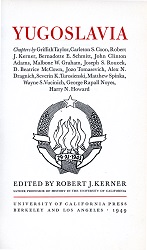Modern Ecclesiastical Development
Modern Ecclesiastical Development
Author(s): Matthew Spinka
Subject(s): History of Church(es), Cultural Anthropology / Ethnology, Sociology of Culture
Published by: CEEOL Digital Reproductions / Collections
Keywords: Church(es) in Yugoslavia; Religion in Yugoslavia;
Summary/Abstract: The age-long tragedy of the Slavic race — the division of the Slavic peoples caused by the fact that some had been drawn into the orbit of Western, Latin, Roman Catholic civilization, whereas others derived their culture Byzantine, Orthodox sources — was nowhere more keenly felt than in Yugoslavia. This country affords the clearest example of the divisive effects of cultural schism: the Serbians are culturally and religiously Eastern Orthodox; the Croatians and the Slovenes are staunchly Roman Catholic. With the political unification of the Serbs, the Croatians, and the Slovenes, which was formally proclaimed on December 1,1918, the formidable task of making a homogeneous nation from these diverse elements, divided by a millennium of separate historical development, was matched by the no less necessary task of adjusting the diversities of their ecclesiastical organizations. For ecclesiastical disunity threatened to prove a serious obstacle to national unity.
Book: YUGOSLAVIA
- Page Range: 244-260
- Page Count: 17
- Publication Year: 1949
- Language: English
- Content File-PDF

